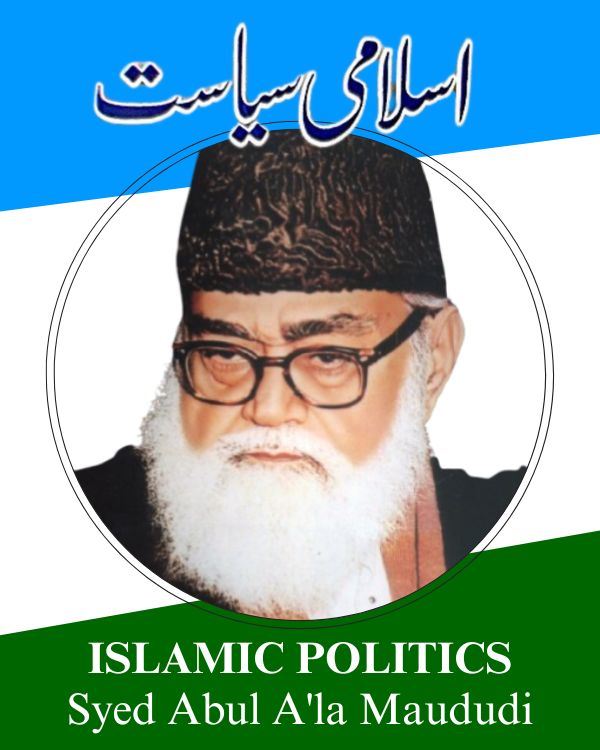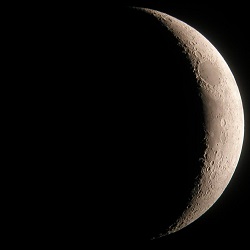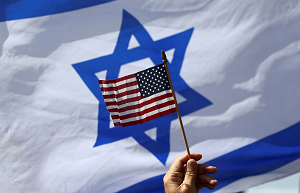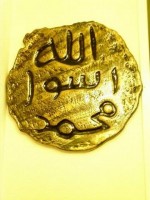Syed Jawed Anwar
BRITISH occupied India from the Muslims. Although the Indian public, including Hindus, resisted British power initially, a special interest group of high-class Hindus with the support of the British Raj emerged. They made Muslims’ social and religious life miserable. Western orientalists and new Hindu revivalists had been rampantly attacking Islam, its culture, religious practices, and its respected personalities.
On the one hand, British writers wrote several books and novels to disgrace Islam and Prophet Muhammad ï·º; on the other hand, they supported Hindu revival movements, organizations, and personalities to do the same task. One of such organizations was Arya Samaj. Swami Dayanand Saraswati (b. 1824, d. 1883, real name Mul Shankar), a native of Gujrat, founded the organization in Bombay (the city name changed to Mumbai now). He authored and published a book Satyarth Prakash in which he disgraced Prophet Muhammad ï·º with his derogatory and humiliating remarks. He supported an aggressive and violent approach to imposing Hinduism in India. His slogan was “Hindustan (India) for Hindus (only).”
He started a movement to ban cows from slaughter as Hindus believe the cow is like their mother goddess. His hate speeches and slogans against Islam and Muslims ignited communal tension and riots all over India.
After Sarswati’s death, his hate movement was carried out by the leaders like Lala Hansraj (b.1864, d.1938), Pandit Gurudatt Vidhyarthi (1864-1890), Lala Lajpat Rai (1865-1928), and Swami Shardhanand (1856-1926). This movement led to communal riots between Hindus and Muslims in India, where people of all faiths had been living peacefully for centuries. Arya Samaji movement is the founder of religious aggression and terrorism in India. After Utter Pardesh (UP), Swami’s supporters got primary roots in Punjab. His followers’ numbers had reached more than one hundred thousand.
Swami Saraswati launched himself as a Hindu reformer. He realized that with idol-worship and other social superstitions, Hindus couldn’t stand up and stop Islam as a rising ideological power. So he asked Hindus to stop idol worshipping. However, his movement’s main focus was to root out Muslims and Islam from India.
Lala Lajpat Rai formed Hindu Sanghton to inflame anti-Muslim sentiments in India. In British India, he was free to do anything.
Swami Shardhanand was released by a British court in a criminal case to launch an aggressive movement against Muslims. “Divide and Rule” was the British’s governing policy since day one. And Arya Samaji forces were best suited for them.
These hate-mongering religious leaders’ teachings created an environment where Muslims couldn’t leave peacefully. These teachings were reflected in the literature produced by Hindu authors. For example, in a famous novel, Anand Nath, the author Bankim Chandra Chatterjee (1838–1894) encourages the children of Kaali Maata (a goddess mother) to clean out “unclean” Muslims.
Jeewa Nanad, the hero of the novel, delivered a speech at the door of a temple, sword in hand, saying, “We always thought to end Muslims era and wish to throw them in a river, cut them (Muslims) in pieces and will clean our holy land from this dirt, and, my friends! now the time has reached to accomplish the task.”
The same novel presented a song, “Bande Matram,” that the Indian Congress and now Bhartiya Janta Party tried to impose as a national song of India. Muslims always resisted and opposed it. The song generates hatred and encourages the worship of the goddess land.
Another important hate personality was Bal Ganga Dhar Tilak (b. 1856, d 1920), born in a Brahmin family. He was a political leader, but all his politics was for religious aggressiveness against Islam and Muslims. He claimed himself as a torch bearer of Bhagwat Geeta (a Hindu holy book) and Shivajee (a Hindu Maratha leader, b.1630, d.1680). According to him, the teachings of Shiwa and Bhagwat Geeta are to end your enemy as you can use any tactics and ploy. According to him, Shivajee did an excellent job by killing a Muslim General, Afzal Khan (d. 1659), by deceiving him in a meeting for peace.
Tilak’s main job was to spread hatred against Muslims and form local organizations and lathi (stick) clubs to stop cow slaughtering. He arranged special fairs to promote hatred against Muslims and other minorities.
The most dangerous and hateful outcome of all these movements was the Shudhi movement. Shudhi means “purification.” The movement’s purpose was to convert all non-Hindus (mainly Muslims and Christians) to Hindus. To make someone Hindu (like baptism in Christianity), they had to eat a mixture of cow’s urine, dung, yogurt, milk, and butter. They called this mash panjratan (five jewels).
In short, the movement to make someone “shuddi” used force and bribe tactics.
In the beginning, the religious movement was under the hand of some religious leaders. The entrance of Swami Shraddhanand made this movement extremely volatile. His original name was Munshi Ram, previously employed in the Punjab police. He had resigned and started a law career. After that, he claimed that he had retired to concentrate on prayer and attain religious life. At this stage, he got the title of Swami Shraddhanand. He became the founder and organizer of the Shuddi movement in 1923. He made Delhi his capital for the movement’s activity.
The list of the objectives of these movements and organizations is long. However, the primary purpose of the “Shuddi” movement was to convert Muslims (and Christians) to Hinduism. The Sanghton movement was supported by promoting the physical elimination of those who escaped from Shuddi.
In 1925, the movement leaders started organizing events in the memory of Swami Dayanand Saraswati. The new strategy was formulated to increase the velocity of the movement, and a vigorous propaganda movement with new endeavours against Islam, Prophet Muhammadï·º, and Muslims was launched.
Muslims, particularly new Muslims, were asked to convert to their ancestors’ religion, Hinduism. To a small extent, they succeeded in those new Muslims living in Hindu-dominated areas.
First, they were offered incentives and grafts, then religious preaching; after that, they used force and violence. At last, they started disgracing, dishonouring, and insulting the life of Prophet Muhammad ï·º Û”
Their writers, novelists, prose and story writers started writing and publishing blasphemous literature against Prophet Muhammad ï·º on a large scale and all major cities of India, particularly in the states UP and Punjab.
Shardhannad, his followers, and students sponsored newspapers like “Gurughantal,” which abused, cursed, and used highly derogatory remarks against Islam and its sacred personalities.
Famous sacrilegious literature poured into the market. British Raj allowed all this profane garbage in the name of “freedom of expression .” False stories of the apostasy of Muslims (Shudhi) were published in Hindu propaganda newspapers all over India. The most profane language was used against Prophet Muhammad ï·º, his family members, his wives (Muslims consider them as their mothers), and his most loved ones. I can’t quote even the title of those disgraced articles, books, and novels.
Muslim writers, scholars, and speakers defended Islam and the Prophet with their writings, speeches, and decrees. They responded by authoring books and articles in response to those sacrilegious articles and novels. Maulana Sanaullah Amritsari (1868 –1948), Maulana Mufti Naeemuddin Muradabadi (1887-1948), Shah Hussain Ali Ashrafi, (despite his old age, b. 1850, d. 1936), Syed Abul A’la Maududi (1903-1979), Maulana Ghulam Qadir Ashrafi (1906-1979) are a few prominent names who defended and struggled intellectually in this blasphemous environment. But all their intellectual responses seemed to be in vain.
Now Muslims Youth Came Forward to Revenge:
Ghazi Abdur Rasheed Shaheed, a native of a village of district Buland Shahar, Uttar Pardesh (UP), and a resident of Delhi, stood up against Swami Shraddhanand. Abdur Rasheed belonged to a respected Sadat (Prophet Muhammad ï·º’s) family and clan named Sadat-e Baraha. He was formally Islamically educated and was a calligrapher (kaatib) by profession. He was married to a medical doctor Asghari Begum (d. 1969 in Karachi). He was one of the extreme lovers of Prophet Muhammad ï·º. He spent some time in those areas where the Shudhi movement created a toxic environment. From the very beginning, he was anti-imperial occupying power. He met several freedom movement leaders like Maulana Muhammad Ali Jauhar (1878 –1931), Dr. Mukhtar Ahmed Ansari (1880 – 1936), and Hakeem Ajmal Khan (1868-1927).
Ghazi Abdur Rasheed Shaheed had been continuously thinking of how to settle a score with Swami Shardhanand. On December 23, 1926, Abdur Rasheed went straight to his residence and, using his pistol, silenced Shardhanand forever. Ghazi was arrested and pleaded that he killed Shraddhanand intentionally and for the purpose.
A prominent Muslim lawyer Barrister Muhammad Saleem tried to defend him and save him from the death sentence. But Ghazi Abdur Rasheed consistently admitted that he murdered for the purpose. All the arguments of the lawyer of psychological abnormality and emotional outburst were in vain as Ghazi explained clearly and argued why he took this step.
Ghazi Abdur Rasheed excitedly awaited his shahadat (martyrdom), and he got it on November 14, 1927. 13
Notes:
13. Allah aur Rasoolï·º ke Shaheed (Namoos e Risalat ke Saat Shaheed), Urdu by Rai Muhammad Kamal
To be continued.
ARTICLE-1
ARTICLE -3







